Blu Kote for Chickens – Save Your Chicken’s Life!
When you begin the adventure of backyard chicken keeping, those feathery friends can quickly become a well-loved part of the family. But what do you do when something goes awry? For those rare occasions, one of our favorite tools in our medicine cabinet is Blu Kote for chickens! Let’s talk about what Blu Kote is and why it can be so effective for chickens.
What is Blu Kote?
According to the National Institute of Health, “BLU-KOTE® is a germicidal, fungicidal, wound dressing and healing aid effective against both bacterial and fungus infections most common in skin lesions of domestic animals.”
From our research the main active ingredient in Blu Kote is Gentian Violet. The creation of Gentian Violet is attributed to Charles Lauth, French Chemist in 1861. In 1880 it became more well known thanks to German pharmacist George Grubler. It has long been touted for its anti-septic, anti-fungal, anti-bacterial, and anti-viral properties.
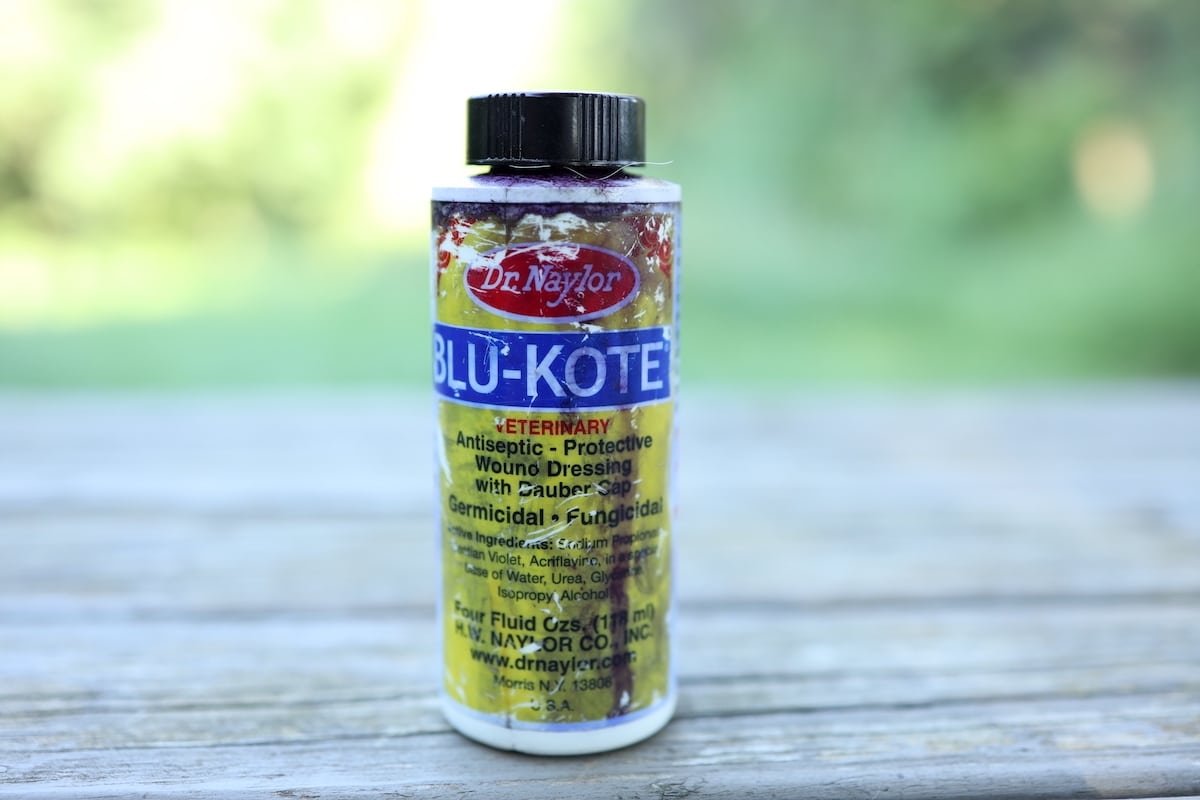
Dr. Naylor’s Blu-Kote, the most popular product on the market and the one we have experience with, was founded in 1926 by veterinarian, Dr. Naylor. After being frustrated by the subpar animal practices he was seeing, Naylor created his own treatments using pipe cleaners, wax, and antiseptic balm. This began the family owned and operated business that still exists today nearly 100 years later.
Our Story with Blu Kote for Chickens
For the past three years now, we’ve raised meat chickens in chicken tractors on our homestead. The chickens are moved twice a day so they have access to plenty of fresh pasture. But every year we’ve come up against the same problem.
Inevitably at some point, we’ll discover a chicken with some sort of small wound of injury. When chickens see the color red or spot blood, in their nature they tend to go into attack mode, even being cannibalistic. Because the chickens are enclosed in the tractor, the poor wounded bird has no place to go and can quickly fall victim to persistent pecks from the rest of the flock. This will quickly lead to serious injury or even result in chicken death.

The first year we noticed a chicken with a small wound, we took note but since it looked very minor, we didn’t think much of it. But, within a couple of hours when we went back to check on her, we found the poor chicken dead.
We were shocked and needed a plan to prevent such a thing from happening again. And that’s when we discovered Blu Kote.
Blu Kote Saved Our Chicken’s Life!
The beauty of Blu Kote for chickens is not just its ability to heal, but also its ability to cover up!
As the name implies, Blu Kote is a dye that literally turns the skin a blue or purple color. So, when placed on a chicken, not only does it help heal the injured area, it also hides the blood from the wound keeping other chickens from picking on that chicken.
This past year, we found ourselves in a similar position. We discovered a chicken in our chicken tractor with a small wound. Immediately, we went and got the Blu Kote, applied it to the wound, kept her in the tractor, and monitored things closely. A few hours later, she was untouched. A few days later, her wound was completely healed.
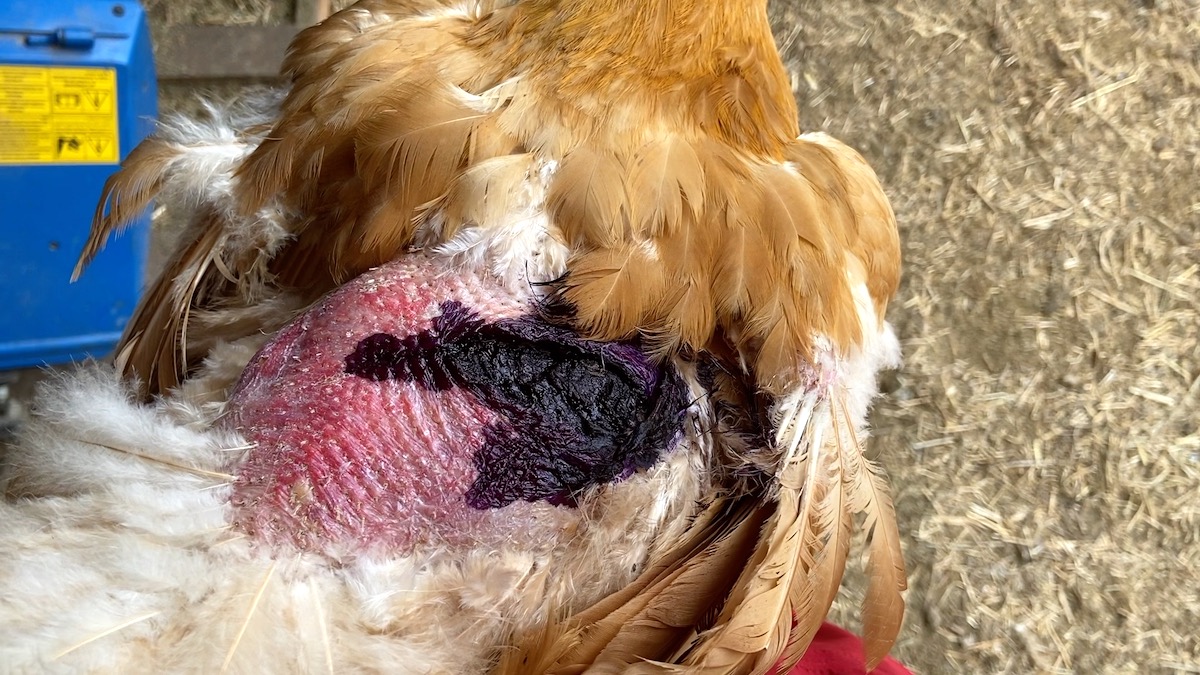
This is just one of a few examples that we have of successfully using Blu Kote to heal one of our chicken’s wounds and protect them from any potential attack. We are sold.
How To Apply Blu Kote and How Often
To apply, securely hold your chicken and carefully apply Blu Kote so that it completely covers the wounded area. If the wound is dirty, clean and dry prior to applying Blu Kote.
The beauty of Blu Kote is that, because of the purple stain it leaves, it’s very obvious where it has been placed. When applying with the dauber, the blue dye has a tendency to spread beyond the initial point of contact. I like to wait a few seconds after applying to see if it covers what I need before going too crazy upfront.
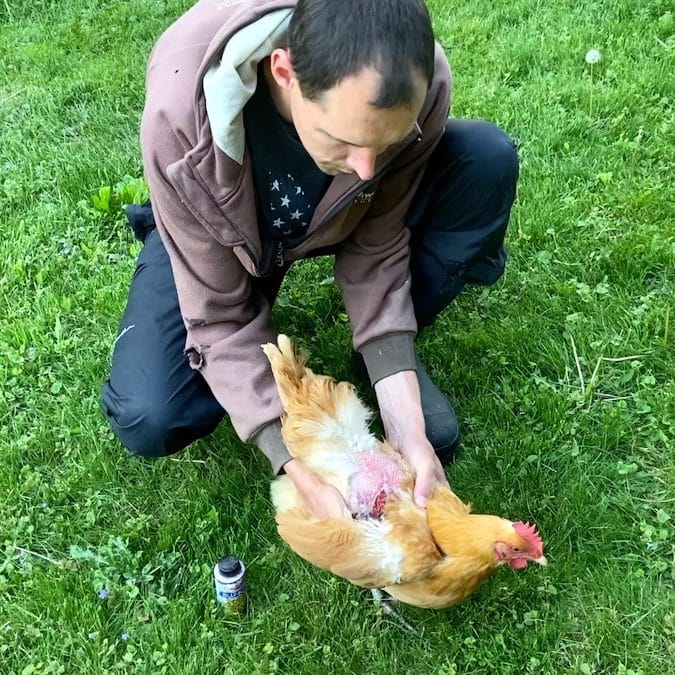
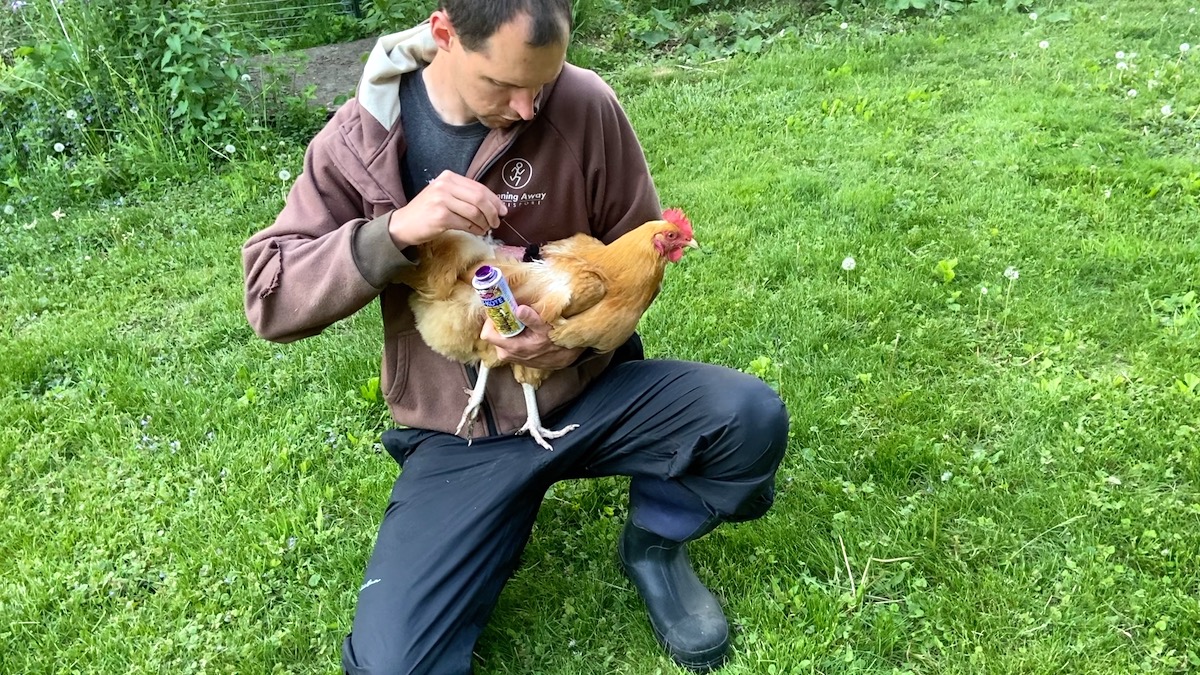
Dr. Naylor recommends reapplying Blu-Kote, “morning and night or as required.” We’ve always applied once and monitored from there. Small wounds may heal up after one application. More significant wounds will likely require more frequent applications and more careful monitoring.
The first couple days are crucial to keep a close eye on your chicken to make sure they’re not getting pecked at. If the wound does open up again and blood becomes visible, be sure to reapply Blu Kote right away. Separating your chicken for a period of time may also be necessary.
Cautions Using Blu Kote for Chickens
If you start digging into the research on Blu Kote, it is not free from risks. There has been some evidence of the association between Gentian Violet use being a risk factor for cancer. This is primarily from a study that gave mice and rats moderate to high levels of Gentian Violet orally for two years resulting in tumors in various organs. From the current research we have found, there have been no reports linking Gentian Violet to cancer in humans, or from occasional topical use on animals.
For us, we do not take lightly the products we put onto and into our bodies. With Blu Kote, we’d never recommend applying excessively or orally. Blu Kote is not a natural substance but a synthetic liquid made in a lab. However, we’ve found the benefits to outweigh the potential risks in these isolated instances when it could easily mean life or death for our chickens.
Frequently Asked Questions
What Blu Kote product do you recommend?
We only have experience using Dr. Naylor’s Blu-Kote. It comes in a spritz, an aerosol spray, and a dauber. Our personal preference is the dauber. This allows you to have the most control over exactly where the Blu Kote is placed.
Where can I purchase Blu Kote?
We picked it up from our local Tractor Supply but Blu Kote is also sold at Chewy, Jeffers Pet, Blain’s Farm and Fleet, Walmart, Big Dee’s Tack & Vet Supply, QC Supply, Mills Fleet Farm, or can be purchased on Amazon.
Do you recommend always having Blu Kote on hand?
With the number of chickens we raise, and especially with raising meat chickens in chicken tractors, we plan to always have it on hand. At a minimum, check your local farm and animal supply stores and know where it is available. When the need comes up, you will want it quick!
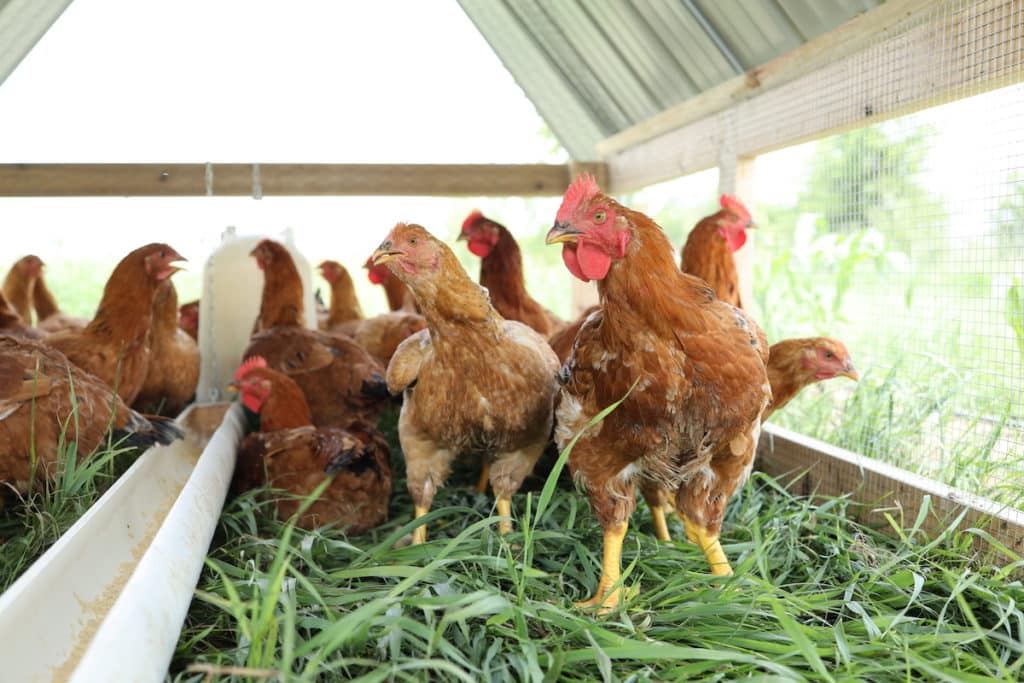
Can Blu Kote treat bumblefoot in chickens?
Yes. The Dr. Naylor product details note Blu-Kote as being effective in treating bumblefoot in chickens.
What if I get Blu Kote on myself?
You definitely want to be careful when applying Blu Kote. It can easily stain your hands or clothing. We always make a point to wear old clothing that we don’t care about when we will be applying Blu Kote. If you do get it on your skin, quickly and thoroughly wash with soap and water and I promise, it will come off, eventually. Another measure of protection is to wear rubber gloves when applying.
How long will Blu Kote stain my chicken?
We have found that the Blu Kote will remain on their skin or feathers for a few days or weeks. It will come off over time.
Can Blu Kote be used for other animals?
Yes! It is compatible with sheep, deer, elk, turkey, moose, lamb, pigs, antelope, chickens, livestock, horses, emu, bison, goats, dogs, llama, donkey, cattle, and poultry. According to Dr. Naylor, just don’t use it on cats.
In fact, we initially picked up Blu-note when our Livestock Guardian Dog, Stella, came down with some nasty wounds around her ears. Even though her white ears were purple for a good month, the wounds healed up nicely!
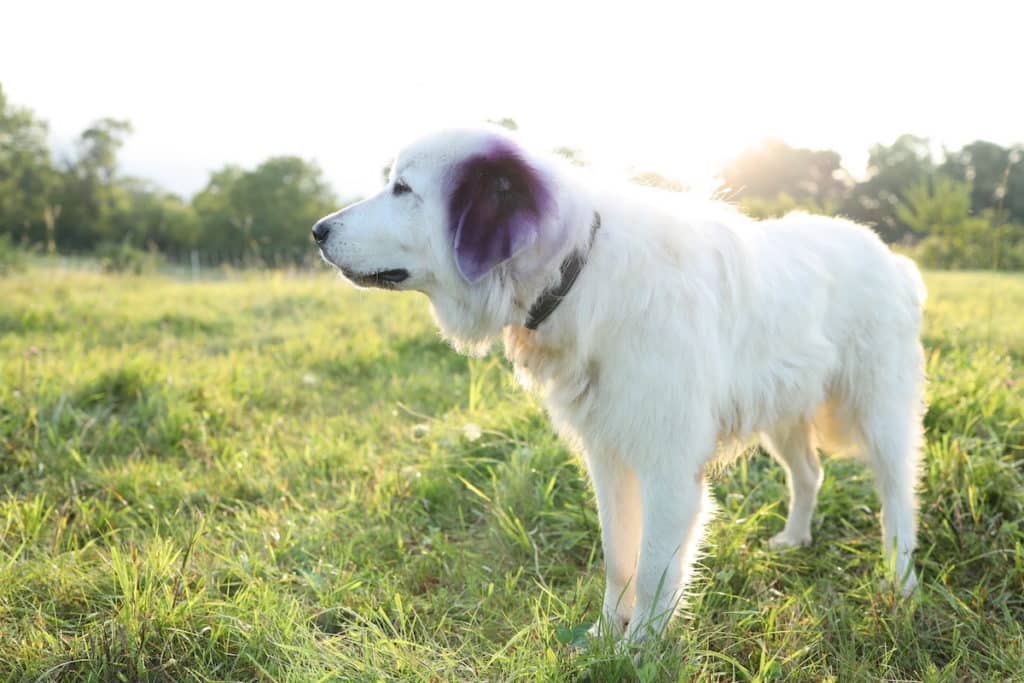
What’s been your experience using Blu Kote on your chickens? We’d love to hear in the comments.
Some of the above links are affiliate links. This means we earn a small commission on qualifying purchases at no cost to you. We are so appreciative of your support!
For more on keeping backyard chickens, check out:
- Chicken Prolapsed Vent | Simple Remedies For Natural Recovery
- Cornish Cross Vs. Freedom Ranger Chickens
- Predator Proof Chicken Coop Essentials You Need To Know
- Easy DIY Heated Chicken Waterer
- How To Care For Chickens In The Winter Basics
- How To Care For Baby Chicks
- Feeding Chickens Egg Shells (Why, When, & How)
- Custom A-Frame Chicken Tractor For (Almost) Free
Pin it for later!



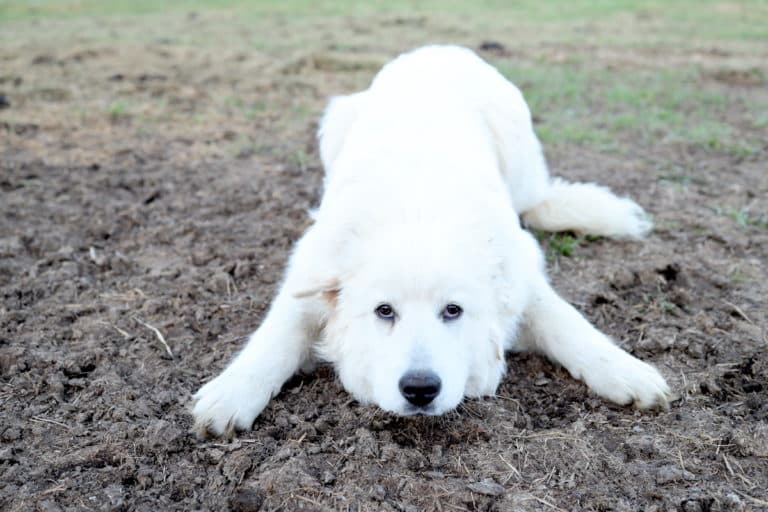
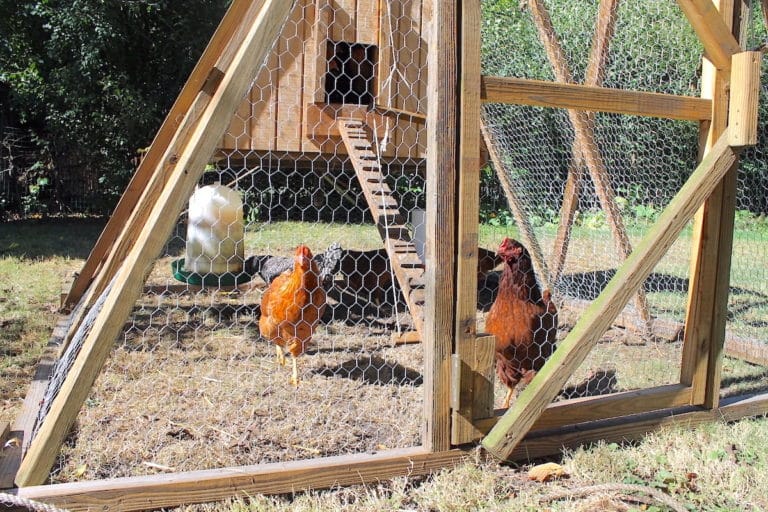

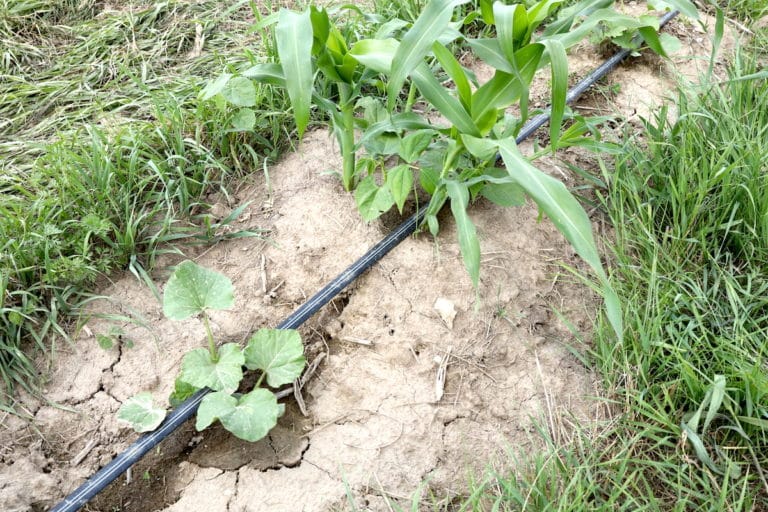
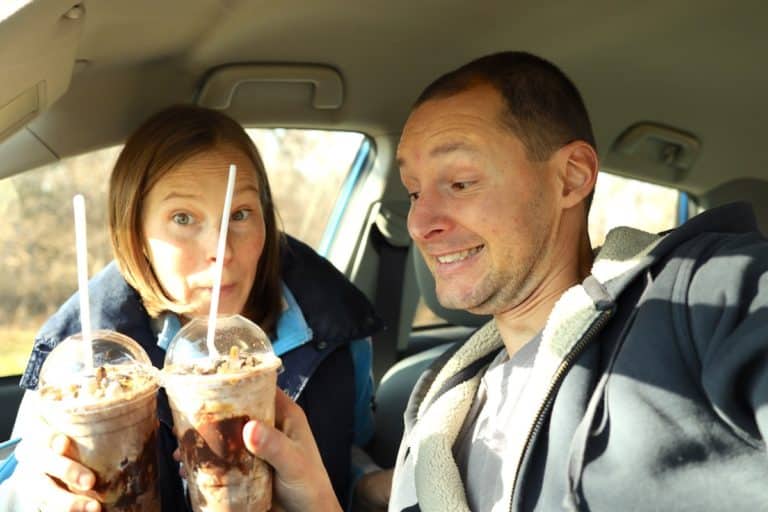
I put Blu klot on my girls backs and now I’m worried about the effects of it on them and the eggs.
I had been giving our eggs away, and my family has also been eating them.
If I stop using Blue klot now will their eggs still be safe??
What can I use in place of Blu klot that is safer?
Please advise, I know you are not a vet but my vet told me we could no longer use any of the girls eggs.
I feel that is a bit excessive as ether are only 1 year old. And that’s what we got them for.
Thank you so much and have a great day!
Blessings,
Jen Rardin
Hi there! Yes, we are definitely not vets, so nothing we say is a recommendation. In my opinion, Blue Kote should be reserved for serious or life threatening injuries with animals until wounds are healed or healing. I don’t think it’s intended for regular application besides these types of emergencies. As far as eggs, I can’t say. I know Blue Kote is powerful stuff, so it may be wise to wait until it has worn off and things are fully healed before consuming eggs. Wishing you and your flock the best!